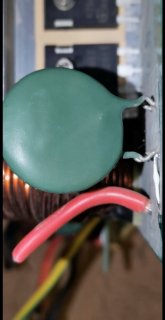Sverige
A Brit in Sweden
It seems it’s mostly the more expensive charge controllers which make provision for external enable / disable control via a closing contact. What all of the cheaper charge controllers seem to have in common though is over temperature protection which shuts off charging when the internal temp reaches something like 75-85C.
So I have an idea - given that thermistor resistance has an inverse relationship to temperature - ie. resistance drops as temp rises, how about switching via a closing contact a low value resistor in parallel with the thermistor? In other words, open up the charge controller, solder a pair of wires either side of the thermistor and between those two wires connect your controlling device (which opens or closes a dry contact) and a low (1kOhm?) resistor.
Control signal is open contact, charging runs as normal. Control signal goes closed contact and SCC sees a below 1kOhm resistance from the onboard thermistor and perceives this as over temperature and shuts off charging.
I really can’t be the only one to have thought of this, so I wonder who’s tried it and how did it work out? My controlling device will be an electrodacus BMS and with this proposed approach I’ll avoid the cost (and inefficiency) of solid state relays inline with the PV input.
So I have an idea - given that thermistor resistance has an inverse relationship to temperature - ie. resistance drops as temp rises, how about switching via a closing contact a low value resistor in parallel with the thermistor? In other words, open up the charge controller, solder a pair of wires either side of the thermistor and between those two wires connect your controlling device (which opens or closes a dry contact) and a low (1kOhm?) resistor.
Control signal is open contact, charging runs as normal. Control signal goes closed contact and SCC sees a below 1kOhm resistance from the onboard thermistor and perceives this as over temperature and shuts off charging.
I really can’t be the only one to have thought of this, so I wonder who’s tried it and how did it work out? My controlling device will be an electrodacus BMS and with this proposed approach I’ll avoid the cost (and inefficiency) of solid state relays inline with the PV input.



